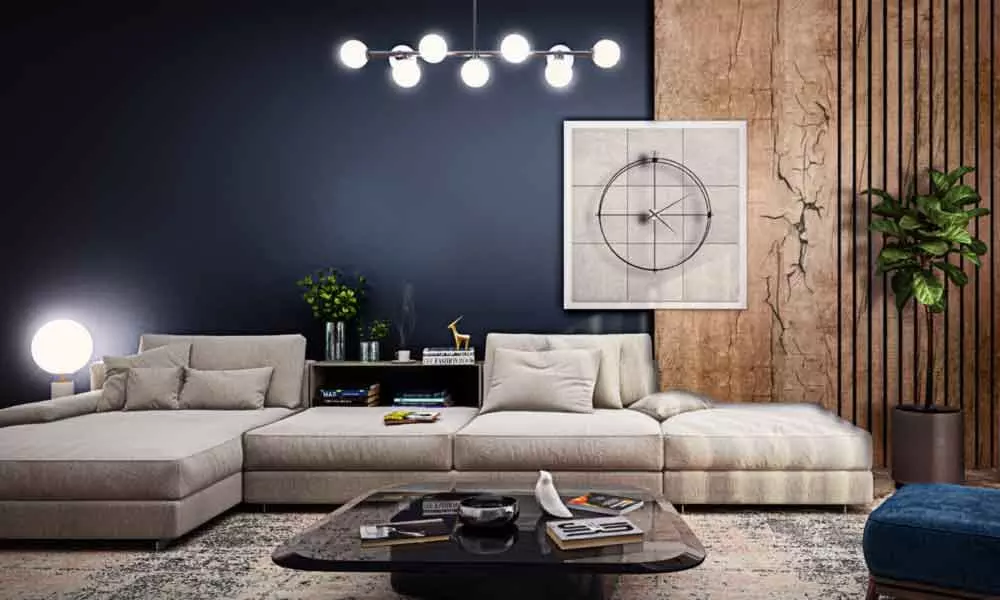How interior design can influence your mood

It’s often said that your home is an extension of your personality – the way you design it reflects not only your social standing, but also your preferences.
It's often said that your home is an extension of your personality – the way you design it reflects not only your social standing, but also your preferences. Whether you are into bold styles or like to keep things minimal, your personality influences the choice you make while decorating the interiors of your house. Likewise, different elements of interior design evoke unique emotions in different people.
As per a recent study published in the journal 'Personality and Social Psychology Review', every place generates some emotional experience. The study states that being in a certain environment drastically constrains or facilitates certain emotional experiences, our relationship with others, as well as our productivity and performance. Psychologists and interior designers have worked in tandem to reach this conclusion. This probably explains why we feel more comfortable in some rooms than others.
Colours
Colours are considered a crucial element in the world of interior designing. According to colour psychology, bright hues such as red, yellow and orange evoke positivity, energy and creativeness. Hence, these shades are more suitable for the living room, where families spend time together and welcome guests. Since yellow is said to increase attention and creativity, it makes for a perfect choice for the study room. Likewise, white and earthy tones like grey, moss green, umber etc are associated with serenity, depth and stability. Thus, such subdued colours should be used for painting the bedroom walls. Moreover, pairing a cool shade like blue with a warm shade like orange can create an illusion of depth. So if you want to make a room appear bigger than it really is, paint three sides with a light colour and the remaining side with a bold one.
Lighting
Lighting plays an important role in the overall ambience of a room. The right lighting can dramatically transform a space while brightening our mood, and motivating us. Even though we spend a lot of money on lamps and lighting fixtures, the best lighting source is the sun. It's been observed that people are likely to more productive in rooms with an abundance of natural light. Floor-to-ceiling windows, a skylight and sliding glass doors are a few ways that natural light can pour into a room. If you are inclined towards classic design components, consider installing French windows and doors to add that touch of elegance. When it comes to artificial lighting, choose something that can mimic the effects of sunlight. Warm-coloured LED lights can be your go-to option to eliminate unwanted shadows and make a space seem more inviting. Putting dimmers is another brilliant idea to adjust the lighting to imitate the changes in natural light.
Space
How you shape your spaces can have a great impact on your psychological wellbeing. Research indicates that the ceiling height of a room can impact our perception of space, offering a sense of psychological freedom. People tend to be more focused and creative in rooms with high ceilings, revealed a couple of international studies. What's more, high ceilings stimulate our senses and encourage us to think freely. While most modern houses do not come with no-to-so high ceilings due to space crunch, you can easily make your ceiling higher than it is. For example, painting the ceiling with white or light colours, strategic distribution of lighting, and sticking to low-to-the-ground furniture are proven ways to create an illusion of more.
Texture
Besides the three elements mentioned above, the textures and shape of furniture can determine how we feel. Psychologists argue that every object we use to fill a space – be it the sofa in the living room or wall hangings – make a significant impact on our emotional state. This is something the ancient practice of Feng Shui teaches us; the textures and patterns of furniture and other decor items should represent the natural elements. The texture of a shaggy or patterned rug will exude calmness while bringing positive energy into your interiors. Since wooden elements are linked to vitality and new beginnings, you can go for hand-carved wooden furniture to promote health and personal growth. If you want to foster a sense of independence, opt for decorative metal elements like vases, wall clocks and statues.

















